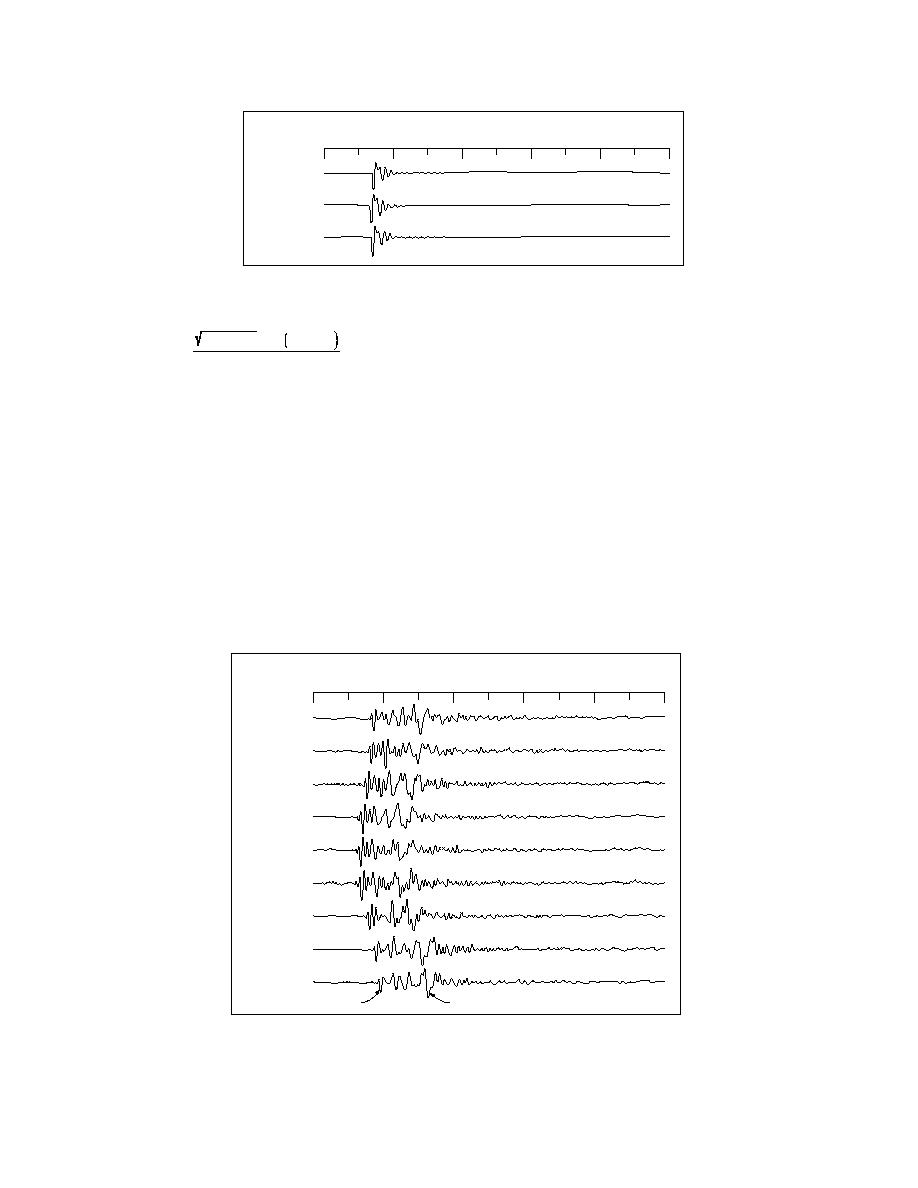
Time (s)
Elm
N
Amp
(
o.
dB) 0
0.2
0.4
0.6
0.8
1.0
2
0.6
1
0.8
6
0
Figure 16. Microphone subarray response to a .45 caliber blank pistol shot.
xm + ym cos αm θ
2
2
∆tm =
,
(32)
(Figure 17) have two distinct arrival phases. The
Vo
first arrival is a roughly 75-Hz waveform that has
where αm is the angular location of the mth sensor.
a phase velocity of approximately 330 m s1. It has
Given a digital record of an ideal plane wave
the distinct appearance of the acoustic impulse
source, the accuracy of eq 32 will be limited by the
observed in the microphone waveforms. Later in
time-domain sample interval.
the geophone time series, the waveforms shift to
25 Hz and have a phase velocity of approximately
220 m s1.
4.1. Impulsive acoustic source
The first field example discussed is the .45 cali-
The frequency domain spectra for these signal
ber pistol firing blanks toward the array from the
vectors are given in Figures 18 and 19. Each spec-
closest point of approach (CPA). The time-domain
trum is based on a 2000-point series sampled at
microphone and geophone response to a single
0.0005 s, segmented into 3 blocks of 1024 points,
pistol shot are shown in Figures 16 and 17. The
and overlapped by 53%. A Blackman window
microphone waveforms have phase velocities of
taper was applied to each block.
approximately 330 m s1. The seismic waveforms
The primary features to note in the microphone
Time (s)
Elm
N
Amp 0
(
0.2
0.4
0.6
0.8
1.0
o.
dB)
5
1.1
4
0.2
3
0.6
2
0.9
6
0.1
1
0.4
7
0.6
8
1.1
9
0
75-Hz Air Wave
25-Hz Surface Wave
Figure 17. Time-domain vertical geophone subarray response to a .45 caliber
blank pistol shot.
17



 Previous Page
Previous Page
